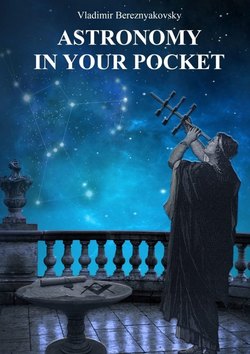Читать книгу Astronomy in your pocket - Vladimir Vladimirovich Bereznyakovsky - Страница 14
I. THE GREAT EXPLORERS
WILLIAM HERSCHEL
ОглавлениеIn observational astronomy, William Herschel can be called Columbus, because he was the first with his telescope to go beyond our galaxy, expanding the Solar system and “moving” the Sun. William was born in 1738 in Germany in the family of a musician of the Hanoverian guard. From the age of 15, he played in the same orchestra on the violin, organ and oboe, the latter of which is the most complex instrument. In 1757, when the seven Years’ war began, the Anglo-Prussian army was defeated at the battle of Hastenbeck, and Herschel fled to England, for which he was accused of desertion. Herschel changed his name to English and quickly learned English. His musical interest led him to mathematics, which led him to optics, and optics to astronomy. From the age of 35 to the end of his life, he devoted himself entirely to astronomy. His observations of cosmic double stars and numerous works laid the Foundation for the modern theory of double stars. In 1781 William Herschel discovered a new planet in the Solar system – Uranus, for which he received the Copley medal, which is considered the oldest and most prestigious award of the Royal society of London, and in 1782 was awarded the Copley medal. He was given the title of astronomer by the king.
12-meter focal length telescope
Having assembled dozens of advanced telescopes, the largest of which is a 12-meter focal length telescope, Herschel studied deep space objects, discovering more than 2,400 such objects, known as nebulae. In addition to Uranus, Herschel discovered four other objects in the Solar system: in 1789, two moons of Saturn, Mimas and Enceladus, and in 1787, two moons of Uranus, Titania and Oberon. Herschel was the first to express the idea of the evolution of cosmic matter under the influence of gravitational forces. For almost 40 years, he observed sunspots and recorded their number, shape, and size. Herschel also hypothesized that the milky Way has the shape of a disk, and the Solar system is part of it. Later, the incredible fact was established that in addition to the movement of all the planets around the Sun, the Sun itself moves around the center of our galaxy at a speed of about 200—220 km/sec. In 1800, studying solar filters, Herschel discovered infrared radiation, the use of which later became the Foundation in medicine related to tissues, in pasteurization of products, protection of premises and night vision devices. The great scientist died in 1822, having lived 83 years, and on his tombstone it is written: “Broke the bolts of Heaven.”
